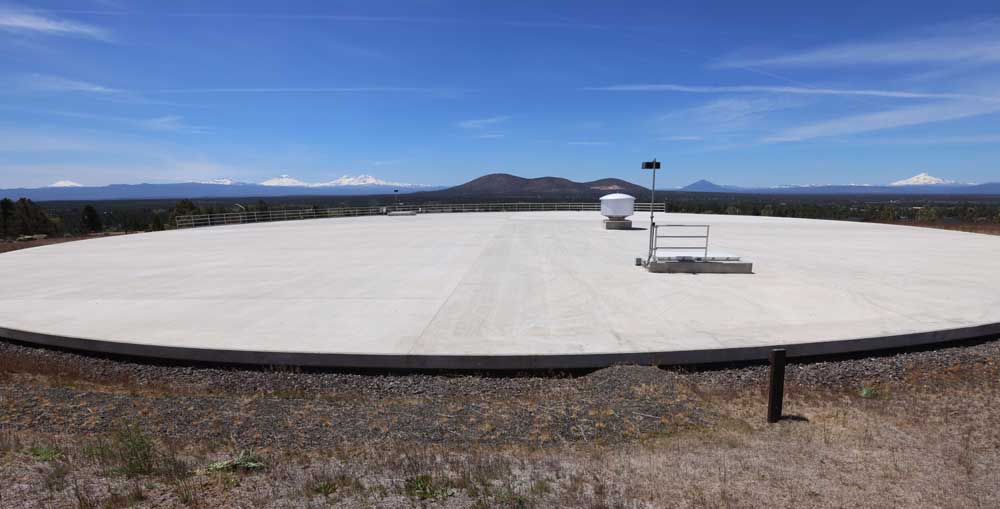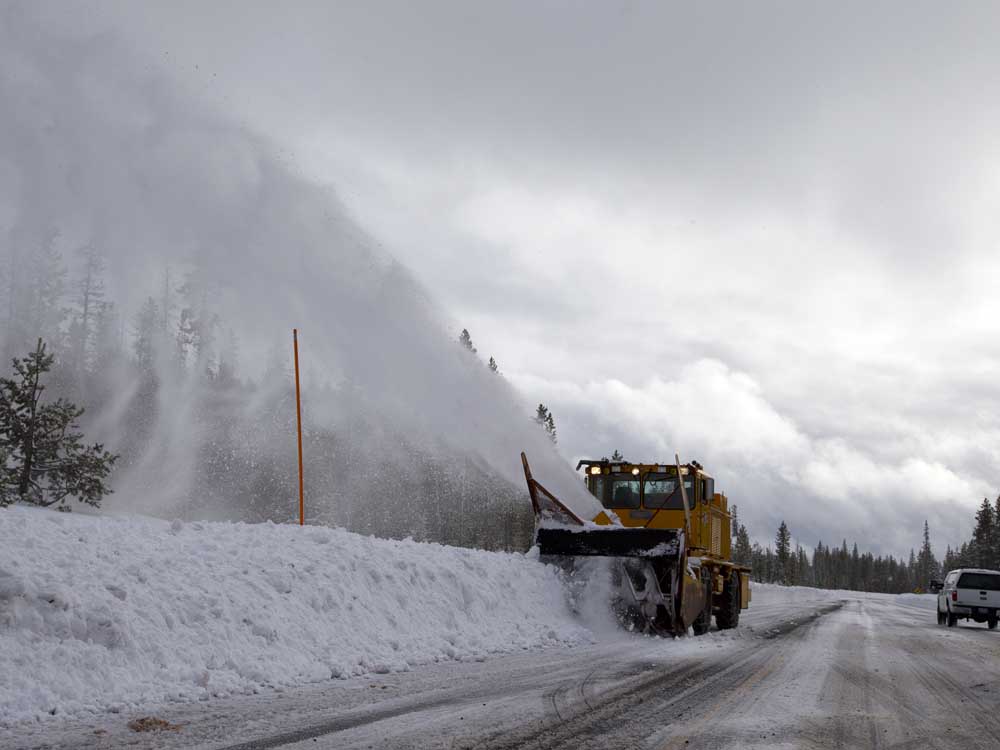Bend’s future water rights in limbo as state agency might deny groundwater permit
Published 5:45 am Tuesday, June 4, 2024

- The top of the 4 million gallon water tank at the South Redmond Water Facility.
Earlier this year the Oregon Water Resources Department signaled to the City of Redmond that it could not approve its permit for new groundwater rights. Bend is watching this development closely.
Central Oregon’s largest city submitted its own application for a groundwater permit in December to meet the water needs of the growing city. Six months later, Bend is still waiting for a response.
“We have no news on this. We do not know how long it will take to receive a response or determination, but anticipate it could be months or years,” said Lori Faha, environmental resources manager for the City of Bend.
The Oregon Water Resources Department has proposed new rules that if approved, will make it more difficult for municipalities to acquire groundwater rights if data shows that nearby aquifers are in decline. The rule is currently in a comment period but could be passed before the end of the year.
That has put Bend, Redmond and other Central Oregon towns in limbo, especially as long-term growth will eventually lead to higher overall water usage, even if per capita water use declines. Officials must now plan for a future that could include restrictions on how much water will be available for public use decades from now.
“We of course are concerned, given that the City of Redmond has received information from (Oregon Water Resources Department) that their permit application will be denied,” said Faha. “We do not know what that means for the City of Bend’s application at this point.”
Alyssa Rash, a spokesperson for the Oregon Water Resources Department, said in an email to The Bulletin that Bend’s permit application is still under review and a “rough estimate” for the release of a decision is six to 18 months.
Peak demand forecasted
In its application to the water resources department, Bend said it needed access to an additional 6.2 cubic feet per second — around four million gallons of water per day — above its current water rights. This is expected to meet Bend’s peak demand through 2045, according to documents issued by the city.
Usage peaks in summer at around 25 million gallons a day. In winter the daily use falls to around 5 million gallons. The average usage per day across the year is around 13.7 million gallons.
The city, which supplies water to 75% of Bend residents, draws its water from two sources. Around 40% comes from groundwater resources, drawn from 20 wells across the city. The other 60% comes from surface water sourced from Bridge Creek, around 11 miles west of the city close to Tumalo Falls.
More Coverage: Bend’s water supply explained, and how you can help conserve it
Bend highlights that its water use per capita has dropped in recent years. In 2022 Bend residents averaged 157 gallons of water per day, down from 214 gallons in 2015. Bend has a goal of reducing water consumption to 143 gallons per day by 2040.
That drop in per capita water use helps Bend contain its overall water use even as the population grows.
Water use in Bend drops as the city increases housing density — more people living in apartments or homes with small yards means less lawn to irrigate. Bend has recently encouraged more water-friendly yards by paying residents to rip out their lawns. Technology — including leak detection and low-flow showerheads — also helps save water.
Users outside Bend
Despite the flattening of water use in Bend, the thousand-foot-thick Deschutes Aquifer under the Central Oregon High Desert continues to shrink. Wells have been running dry at an alarming rate, partly from factors the city cannot control: drought and the piping of leaky canals.
Bend city council member Ariel Mendez says it’s time to consider water use by everyone in the county who taps into the aquifer, as an unbalanced approach to water usage has emerged.
“It’s not going to be enough for just the city of Bend to be more efficient if other users are keeping the floodgates open all season long. For example, rural water users are not covered by the state’s new restrictions,” said Mendez.
Wells on rural residential properties are exempt from water fees and are entitled to pump up to 15,000 gallons of water out of the ground daily and without cost. Meters are also not required on these wells.
Deschutes County has around 16,000 exempt domestic wells, but with no system to encourage water conservation, they are beginning to cannibalize each other. More than 200 have gone dry in the past three years.
“It doesn’t seem very efficient if the city is the only groundwater user that is being asked to economize,” said Mendez.
Watching Redmond
For now, Bend will wait for a response from Oregon Water Resources Department and watch how Redmond’s pursuit of a permit unfolds. At a meeting last month in Redmond to discuss water challenges, Redmond Mayor Ed Fitch called on agencies to collaborate and find a solution that could allow its permit to be approved.
Fitch says Redmond’s application should be approved based on current laws. He adds that the city has spent years promoting water conservation and has purchased surface water rights, mostly from Central Oregon Irrigation District, to increase flows in the middle Deschutes River.
Redmond was caught off-guard when the state agency said it intended to deny Redmond’s application.
“It came out of left field and we were blindsided,” said Fitch.
Redmond intends to go to the court of appeals if the application is formally rejected, said Fitch. He believes a response is two to 10 months away but he anticipates a final decision this summer.
“We believe we are entitled a complete approval, I think that is necessary for the long-term interests of the city,” said Fitch.
“There is no question that we need this water and I am confident that we will get it,” he said.
Groundwater Allocation
Rulemaking 101
The groundwater allocation rulemaking — being developed by the Oregon Water Resources Department — is currently in a public comment period, a process started in April with meetings across the state.
The agency says new rules around groundwater allocation are needed because data shows groundwater is declining across the state and in unsustainable amounts. This is partly due to excessive pumping but also from reduced snowpack.
The result is lowered aquifers leaving wells dry, and forcing well owners to drill deeper into aquifers. Because surface and groundwater are often connected, declining aquifers can also mean lower stream flows.
If the new rules pass, municipalities may be prevented from acquiring new permits to drill new wells. The upshot could be reduced housing growth and curtailed water use for agricultural purposes. That conflicts with expansion plans and objectives for city and state leaders.
Individuals wanting to comment on the rulemaking should do so by 5 p.m. on June 14. Comments can be submitted by email to: WRD_DL_rule-coordinator@water.oregon.gov.






